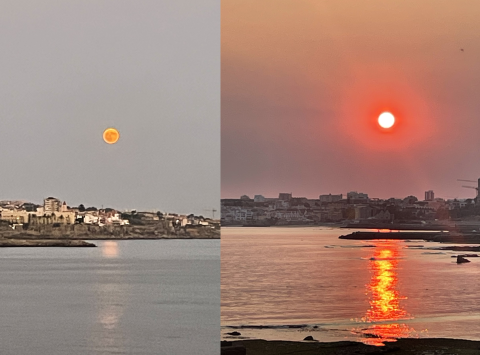TH
Quantum Science and Technologies and High-Energy Physics
Trapped ions: A quantum simulator at the University of Innsbruck. Credit: C Lackner/Innsbruck On 27–28 October 2025, CERN hosted the Symposium on Quantum Science and Technologies and High-Energy Physics (HEP), co-organised through the CERN Quantum…
Read moreWelcome to the Collider Neutrino Era!
Searches for new fundamental particles and interactions at hadron collider experiments such as the SPS, the TeVatron, and the LHC have traditionally focused on heavy and relatively strongly interacting states. The two general-purpose experiments of…
Read moreThe origin of Lead and the s-process branching points
Lead is an abundant element of the solar system and is particularly abundant on the Earth’s crust (Figure 1). The origin of three of its four stable isotopes (206Pb, 207Pb, and 208Pb) can be partially traced back to the decay of uranium and thorium…
Read moreExtended Scalar Sectors are considered from all angles at CERN
It has been more than ten years since the discovery of the first scalar particle at the electroweak scale. This particle was discovered at the LHC in 2012, and it was quickly found to be a scalar that is compatible with the Higgs boson predicted by…
Read moreDESI-Y1 and the Mystery of the Neutrino Mass
In April 2024, the Dark Energy Spectroscopic Instrument (DESI) collaboration released their first cosmological results [1]. These results made the news primarily because they showed some hints of dynamical dark energy (see the article in the same…
Read moreDESI may have initiated a paradigm shift in cosmology
DESI has made the largest 3D map of our universe to date. Earth is at the center of this thin slice of the full map. In the magnified section, it is easy to see the underlying structure of matter in our universe. Claire Lamman/DESI…
Read moreLHC anomalies hint at possible light Higgs boson signature
In 2012 the ATLAS and CMS collaborations discovered a new particle that – within the present theoretical and experimental uncertainties – is consistent with the predictions for the Higgs boson of the Standard Model (SM) at a mass of about 125 GeV.…
Read moreAll the Objects in the Universe (and Some Questions)
When astronauts look at the Earth from orbit, they are often awed by its beauty and isolation. They speak of the overview effect; a cognitive shift to a new larger perspective that gives context and meaning to their lives. For physicists, a similar…
Read moreB anomalies: hopes, disillusions, and future prospects.
Within the Standard Model (SM) the basic constituents of matter are the three "families" (two quarks and two leptons) with different quantum numbers, that completely determine the properties of these particles under the three fundamental forces…
Read moreDeparted giants of theoretical physics
July 23rd 2021 was a sad day for the world of theoretical physics, which witnessed the passing of three giants of the field: Steven Weinberg, Toshihide Maskawa and Miguel Virasoro. Weinberg and Maskawa were awarded Nobel Prizes for their…
Read more









